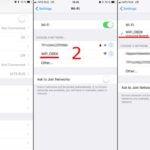The Isuzu Ascender, known for its ruggedness, can sometimes experience starting issues. One common problem is a lack of power to the OBD2 port, often accompanied by other electrical gremlins. This article will explore potential causes of an Isuzu Ascender not starting, focusing on scenarios where there’s no OBD2 power. We’ll examine symptoms, possible solutions, and related electrical issues that might be contributing to the problem.
Common Symptoms of No OBD2 Power in an Isuzu Ascender
When an Isuzu Ascender won’t start and the OBD2 port lacks power, you might observe several symptoms:
- Clicking Sound: A soft clicking sound, often originating from relays in the engine compartment (passenger side near the firewall), indicates a potential relay or electrical connection problem. This clicking may be accompanied by the dashboard lights briefly illuminating and then turning off.
- Radio Malfunction: The radio may not power on or might intermittently shut off and require a reset. This suggests a possible power supply issue affecting multiple components.
- Erratic Tachometer: Once the engine starts, the tachometer needle might bounce erratically, not reflecting the actual engine speed. This points towards an electrical issue potentially impacting the instrument cluster.
- No Communication with OBD2 Scanner: An OBD2 scanner will not be able to connect to the vehicle’s computer system if the port lacks power, hindering diagnostic efforts. This inability to communicate indicates a fundamental electrical problem preventing the OBD2 system from functioning.
Image: Location of suspected faulty relays in the engine compartment.
Potential Causes and Troubleshooting Steps
Several factors can contribute to no OBD2 power and starting problems in an Isuzu Ascender:
- Faulty Relays: The clicking relays near the firewall are prime suspects. Inspect these relays for damage or corrosion. Try swapping them with known good relays to see if the problem resolves. Focus on relays related to the ignition system, fuel pump, and ECM/PCM power.
- Blown Fuses: Check all fuses related to the ignition system, ECM/PCM, and OBD2 port. A blown fuse can interrupt the power supply to critical components. Consult the owner’s manual for the fuse box diagram and specific fuse locations.
- Wiring Issues: Inspect the wiring harness for damage, loose connections, or corrosion, particularly around the relays and fuse boxes. A damaged wire can interrupt the flow of electricity to the OBD2 port and other systems.
- Ignition Switch Problems: A faulty ignition switch might not be sending the necessary signals to engage the starter and power up the OBD2 system. Test the ignition switch for proper functionality.
- Low Battery Voltage: A weak or discharged battery can prevent the engine from cranking and might not provide sufficient power to the OBD2 port. Test the battery voltage and ensure it’s within the recommended range. Charge or replace the battery if necessary.
- ECM/PCM Issues: While less common, a malfunctioning Engine Control Module (ECM) or Powertrain Control Module (PCM) can disrupt communication with the OBD2 port and cause starting problems. Specialized diagnostic equipment might be needed to test the ECM/PCM.
Related Electrical Problems in Isuzu Ascenders
The no-start issue with no OBD2 power might be related to other electrical problems commonly reported in Isuzu Ascenders:
- Dim or Non-Functional Headlights: This suggests a possible voltage drop or grounding issue affecting the lighting system.
- AC/Heater Fan Relay Failures: Repeated failure of these relays indicates a potential short circuit or overload in the HVAC system. Addressing this issue could prevent further electrical problems.
Conclusion
Troubleshooting an Isuzu Ascender with no OBD2 power requires a systematic approach. Start by checking the basics like fuses, relays, and battery voltage. If the problem persists, further diagnosis of the wiring, ignition switch, and ECM/PCM might be necessary. Resolving the underlying electrical issues will likely restore power to the OBD2 port and enable the vehicle to start reliably. If you are uncomfortable working with electrical systems, consult a qualified mechanic for assistance.

